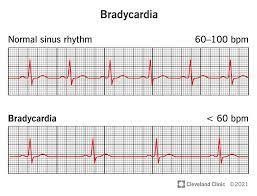A nurse accidently removes celecoxib from an automated medication dispensing system (AMDS) instead of citalopram and almost administers the wrong medication to a client. Which of the following actions should the nurse take?
Report the incident to the nurse manager.
Document that the pharmacy sent the incorrect medication.
Contact the provider to change the client's prescription.
Place the unwrapped celecoxib back into the AMDS
The Correct Answer is A
When a medication error occurs, the nurse should report the incident to the nurse manager or appropriate supervisor. It is essential to follow the facility's policies and procedures for reporting and managing medication errors. Prompt reporting allows for appropriate investigation, documentation, and implementation of necessary measures to prevent future errors.
Documenting that the pharmacy sent the incorrect medication (B) is not appropriate in this situation, as it does not address the nurse's role and responsibility in the error. Reporting the incident is the primary action required.
Contacting the provider to change the client's prescription (C) is not necessary in this case, as the error was related to the medication selection during administration, not an issue with the prescription itself.
Placing the unwrapped celecoxib back into the AMDS (D) is not appropriate. Once a medication has been removed from its packaging or container, it should not be returned to the dispensing system. Additionally, since it was the wrong medication for the client, it should not be administered.
Therefore, the nurse should primarily report the incident to the nurse manager or appropriate supervisor to ensure appropriate handling of the medication error.
Nursing Test Bank
Naxlex Comprehensive Predictor Exams
Related Questions
Correct Answer is D
Explanation
When planning care for a client who had a myocardial infarction and is receiving thrombolytic therapy with an IV infusion of alteplase, the nurse should include the intervention of monitoring for changes in the client's level of consciousness.
Alteplase is a thrombolytic medication used to break down blood clots in certain medical emergencies, such as acute myocardial infarction (heart attack) or ischemic stroke. One of the potential complications of thrombolytic therapy, including alteplase, is bleeding. The medication's action of breaking down blood clots can also affect the body's natural clotting mechanisms, increasing the risk of bleeding.
Bleeding in the brain is a severe and potentially life-threatening complication associated with thrombolytic therapy. Therefore, it is essential for the nurse to closely monitor the client for any signs of intracranial bleeding, such as changes in the level of consciousness, confusion, severe headache, slurred speech, or weakness on one side of the body.
Let's go through the other options:
A. Administer aspirin instead of acetaminophen for fever: While aspirin is commonly used in the management of myocardial infarction, it is not specifically indicated for fever. Acetaminophen is the preferred antipyretic medication for fever management in most cases, and it does not interfere with the action of thrombolytic therapy.
B. Ambulate the client as often as tolerated: While early ambulation is beneficial for clients with myocardial infarction, it may not be appropriate during thrombolytic therapy. Thrombolytic therapy carries an increased risk of bleeding, and ambulation may be limited or contraindicated during the treatment period, depending on the client's overall condition and bleeding risk.
C. Administer a sodium phosphate enema for constipation: The administration of a sodium phosphate enema is not a specific intervention related to thrombolytic therapy or myocardial infarction. Bowel management is important for client comfort and overall well-being, but it is not a priority intervention in the immediate care of a client undergoing thrombolytic therapy.
Correct Answer is D
Explanation
Oxybutynin is an anticholinergic medication commonly used to treat urinary incontinence. One of the adverse effects of anticholinergic medications is the potential for bradycardia, which refers to a slower than normal heart rate. Anticholinergic medications can inhibit the effects of acetylcholine, a neurotransmitter responsible for regulating various bodily functions, including heart rate. Therefore, it is important to assess the client for signs of bradycardia after an unintended higher dose of oxybutynin.
Increased salivation (A) is not an expected adverse effect of oxybutynin. In fact, anticholinergic medications like oxybutynin often have the opposite effect, causing dry mouth and reduced salivation.
Hyperthermia (B) is not a typical adverse effect of oxybutynin. It is more commonly associated with other conditions or medications.
Urinary incontinence (C) is the condition that oxybutynin is intended to treat. It is not an adverse effect but rather the therapeutic effect of the medication.

Whether you are a student looking to ace your exams or a practicing nurse seeking to enhance your expertise , our nursing education contents will empower you with the confidence and competence to make a difference in the lives of patients and become a respected leader in the healthcare field.
Visit Naxlex, invest in your future and unlock endless possibilities with our unparalleled nursing education contents today
Report Wrong Answer on the Current Question
Do you disagree with the answer? If yes, what is your expected answer? Explain.
Kindly be descriptive with the issue you are facing.
